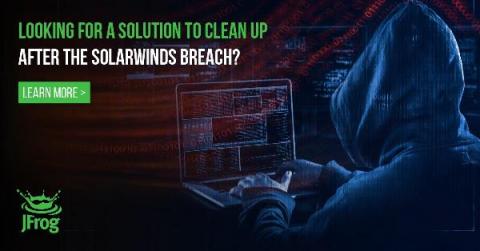Security | Threat Detection | Cyberattacks | DevSecOps | Compliance
Latest News
The Winds of Change - What SolarWinds Teaches Us
In December 2020, the world discovered that the SolarWinds’ Orion Platform had been compromised by cybercriminals, potentially affecting thousands of businesses the world over. Security groups such as the National Cyber Security Centre (NCSC) provided advice and guidance to security teams and IT companies on what actions they should take to minimize the impact on them and their customers.
The rise and fall of the Emotet botnet
Illegally obtained digital identities traded on Genesis Market increase by 250% in two years
What is Social Engineering? Examples and 12 Prevention tips
Social Engineering, in the context of cybersecurity, is the use of deception to convince individuals into relinquishing their personal information online. This information is then exploited in cyberattacks. Most social engineering campaigns target employees because they could be manipulated into gateways to an organization’s sensitive data. The success of these campaigns relies on a lack of cybersecurity awareness training in the workplace.
The rise of QakBot
AT&T Alien Labs closely monitors the evolution of crimeware such as the QakBot malware family and campaigns in connection with QakBot. The jointly coordinated takedown of the actors behind Emotet in late January has left a gap in the cybercrime landscape, which QakBot seems poised to fill.
White House launches plan to protect US critical infrastructure against cyber attacks
The White House is reportedly moving swiftly forward with a plan to harden the security of the US power grid against hacking attacks. According to Bloomberg, the Biden administration has a plan to dramatically improve how power utilities defend themselves against attacks from countries considered to be adversaries in cyberspace – such as Russia, Iran, North Korea, and China.
Automatically Assess and Remediate the SolarWinds Hack
With software supply chain attacks on the rise, are you wondering how you can recover quickly from the recent SolarWinds breach at your company? Months after its discovery, the devastating SolarWinds hack remains a top concern for business, government and IT leaders. This destructive supply chain attack put the spotlight on software development security — a critical issue for the DevOps community.
Use AI to fight AI-powered cyber-attacks
Cyber-attacks are commonly viewed as one of the most severe risks to worldwide security. Cyber-attacks are not the same as they were five years back in aspects of availability and efficiency. Improved technology and more efficient offensive techniques provide the opportunity for cybercriminals to initiate attacks on a vast scale with a higher effect. Intruders employ new methods and launch more comprehensive strategies based on AI to compromise systems.
Don't be the weak link in your customers' supply chain security
To solve the supply chain security dilemma, producers must get back to security basics. Get best practices for securing your supply chain. Nobody wants to be known as the weak link in the chain—any chain. But too many organizations are at risk of being just that in the digital supply chain because they haven’t made the cyber security of their products a priority. The most recent evidence of that is the SolarWinds/Orion cyber attack that impacted more than 18,000 organizations.









